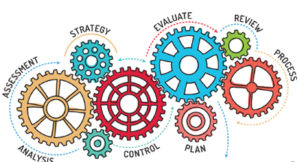 The life blood of global commerce is the smooth functioning of supply chain. In the last three decades, the growth of global sourcing has delivered tremendous benefits. However, there are risks involved in global sourcing—concerns that many companies ignore. “But it’s important to be fully aware of these risks and to take steps to manage them,” says Vipon Kumar, Chief Sourcing and Trading Officer for Daymon.
The life blood of global commerce is the smooth functioning of supply chain. In the last three decades, the growth of global sourcing has delivered tremendous benefits. However, there are risks involved in global sourcing—concerns that many companies ignore. “But it’s important to be fully aware of these risks and to take steps to manage them,” says Vipon Kumar, Chief Sourcing and Trading Officer for Daymon.
Kumar goes on to explain that the risks inherent in global sourcing revolve around five key areas: partnership, merchandise, supply chain, financial and political. “All of these risks are layered and failure to manage any one of them can have a domino effect on the whole system,” he says.
To manage partnership risks, sourcing partners need to be fully vetted from the start. While the standing of sourcing partners in Europe and North America can often be determined through industry reports, in many other countries, sourcing managers must rely on word of mouth and personal vetting of potential partners. “My personal rule is not to make any business contract until I meet the senior level partners three times to understand their character, business practices and business philosophy,” says Kumar. “This may seem old fashioned, but it can help identify potential issues beyond what’s visible on the surface.”
Even with proper vetting, risks related to merchandising can still arise, such as receiving inferior products and/or non-performance of the supply contract. Both can have devastating effects on a retailer’s business—for example, leading to an inability to deliver product to the customer and ultimately increased expenses. But continuous monitoring of suppliers, and proper quality assurance audits and product testing prior to shipment can help avoid such costly mistakes.
These same precautions can help manage what Kumar calls symptomatic supply chain risk. “If we ignore the symptoms in partnership and merchandise risk, then supply chain risk is an obvious outcome,” he says. But there is another type—systemic supply chain risk—that must also be managed. This can come as a result of structural deficiencies in the supply chain infrastructure, such as roads, rail lines and ports. The risk can be mitigated by adjusting delivery schedules to account for potential problems.
When it comes to financial risks, both payment terms and currency fluctuations must also be planned for and managed, says Kumar. This includes negotiating payment terms based on both the buyer’s and supplier’s length of experience, credit worthiness and other commercial considerations, such as underwriting and securitization. At the same time, currency-related risks can be hedged using financial market instruments such as currency swaps and forward covers.
The final area of concern in global sourcing is political risks. “The current political environment is rife with risk from unilateral actions of a country or a trade block,” says Kumar. “Political risk impacts an infinite number of commodities, which can create system shock from the counter-reactions. It’s a factor that must be carefully considered in the global sourcing decision making process.”
To learn more about Daymon’s global sourcing solutions or for help understanding your global sourcing risks, contact Vipon Kumar, Chief Sourcing and Trading Officer at vkumar@daymon.com.

